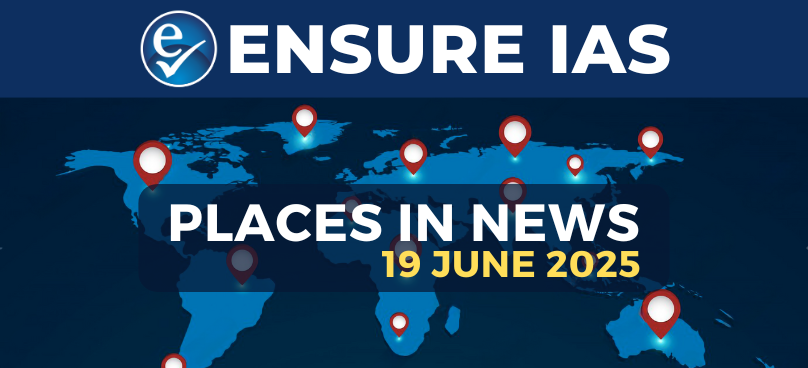- Courses
- GS Full Course 1 Year
- GS Full Course 2 Year
- GS Full Course 3 Year
- GS Full Course Till Selection
- Answer Alpha: Mains 2025 Mentorship
- MEP (Mains Enrichment Programme) Data, Facts
- Essay Target – 150+ Marks
- Online Program
- GS Recorded Course
- Polity
- Geography
- Economy
- Ancient, Medieval and Art & Culture AMAC
- Modern India, Post Independence & World History
- Environment
- Governance
- Science & Technology
- International Relations and Internal Security
- Disaster Management
- Ethics
- NCERT Current Affairs
- Indian Society and Social Issue
- NCERT- Science and Technology
- NCERT - Geography
- NCERT - Ancient History
- NCERT- World History
- NCERT Modern History
- CSAT
- 5 LAYERED ARJUNA Mentorship
- Public Administration Optional
- ABOUT US
- OUR TOPPERS
- TEST SERIES
- FREE STUDY MATERIAL
- VIDEOS
- CONTACT US
Green Hydrogen: High Hopes, Low Exports
Green Hydrogen: High Hopes, Low Exports

Why in the News?
- India’s green hydrogen sector is getting a lot of attention. It is expected to play a big role in clean energy but the growth of this sector is slowing down.
- The main reason is weak export demand. Many global problems and changes in policies, especially in the US and Europe, are causing this slowdown.
What are the Key Highlights?
- Export Challenges:
- Global uncertainties and weak policy frameworks are holding back demand.
- The US Inflation Reduction Act (IRA), meant to boost clean energy, is stalled in the Senate. In Europe, large-scale green hydrogen imports are yet to begin.
- India’s Global Push:
- India is engaging with European ports to ease export logistics and negotiating trade agreements to reduce import duties on green hydrogen.
- Domestic Developments:
- ReNew (an Indian Company) is setting up a green ammonia plant in Odisha but faces poor offtake due to export weakness.
- The government is focusing on domestic demand through tenders and pilot projects.
- Solar Energy Corporation of India has floated tenders for 7–8 lakh tonnes of green hydrogen.
- Hydrogen-powered buses are being tested in Ladakh and other locations.
- Cost Barrier:
- Green hydrogen currently costs $4–$5/kg.
- Green Hydrogen: Made by splitting water using renewable electricity in an electrolyser; low emissions and clean.
- Grey hydrogen (from fossil fuels) costs only $2.3–$2.5/kg, making it more attractive to buyers.
- Grey Hydrogen: Made using coal or natural gas; high carbon emissions.
- Grey Hydrogen: Made using coal or natural gas; high carbon emissions.
- Green hydrogen currently costs $4–$5/kg.
- Policy Support:
- The National Green Hydrogen Mission was launched in 2023 with ₹19,744 crore funding.
- It aims to build India’s green hydrogen production, reduce import dependency, and support the global clean energy transition.
- The National Green Hydrogen Mission was launched in 2023 with ₹19,744 crore funding.
What are the Significances of Green Hydrogen?
Significance of Green Hydrogen
- Clean Energy Source: Green hydrogen is produced using renewable energy (like solar or wind) and does not release carbon dioxide. It helps reduce greenhouse gas emissions and combats climate change.
- Energy Independence: India imports a large portion of its fossil fuels. Green hydrogen can reduce this dependence, making the country more self-reliant (Aatmanirbhar) in the energy sector.
- Industrial Decarbonisation: Green hydrogen can replace fossil fuels in sectors such as Steel production, Fertiliser manufacturing, Oil refineries, Heavy transportation (buses, trucks, ships)
- Versatility: It can be used as a fuel (in fuel cells for transport), A feedstock (for green ammonia, green methanol), For electricity storage (as a long-term battery alternative).
- Export Opportunities: As global demand for clean fuels rises, India can become a major exporter of green hydrogen and its derivatives like green ammonia, boosting economic growth and foreign exchange earnings.
- Job Creation and Innovation: The green hydrogen sector can create skilled jobs in manufacturing, engineering, and renewable energy. It also promotes R&D and investment in new technologies.
- Supports India's Climate Goals: Green hydrogen helps India meet its targets under the Paris Agreement and achieve Net Zero emissions by 2070.
Conclusion
Green hydrogen holds great promise for India’s clean energy future, offering a path toward energy independence and low-carbon growth. While global export challenges and high production costs are slowing momentum, India is wisely shifting focus to build strong domestic demand through policy support, tenders, and pilot projects. With sustained investment and innovation, India can emerge as a key player in the global green hydrogen landscape.
|
National Green Hydrogen Mission
|
Important Keywords
|
|
Ensure IAS Mains Question:
Q: “Green hydrogen has immense potential for India’s energy security and climate goals, but multiple challenges have slowed its progress.”Discuss the significance of green hydrogen for India and outline the key challenges and policy responses needed for its large-scale adoption. (250 words) |
Ensure IAS Prelim MCQQ1. Consider the following statements regarding Green Hydrogen:
Which of the statements given above is/are correct? A) 1 and 2 only Answer: C Explanation:
|



